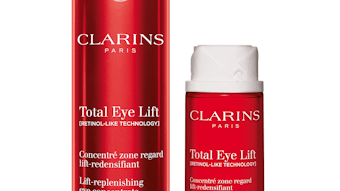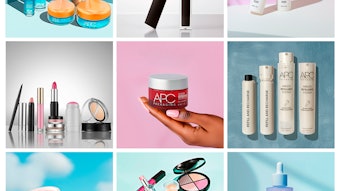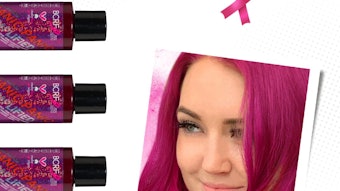Beauty marketers are often looking to start a new product line, create a line extension or rebrand an existing offering. Even with laser-focused objectives, there is often uncertainty as to how to navigate the specific steps within the design process. As seasoned practitioners, we find that our clients are frequently overwhelmed by the questions of how and where to begin implementation.
Let’s presume that you have done your due diligence. This would include, at a minimum, a thorough discovery and strategic planning stage, interviews with your audience and sales teams, analysis of the competition, and identification of opportunities that form a unique value proposition for your target audience. At this point you have an authentic brand story and should be ready to begin design.
What are the design deliverables and in what order should they be executed? For beauty brands with a retail presence, we have found it is often best to start with the number-one consumer touchpoint: the product packaging. This is followed by website design and support collateral such as promotional materials, outreach campaigns and apps.
Packaging
Brand Architecture
Though some brands have only a few SKUs, there are many that have extensive product lines, making the design task seem insurmountable. In these larger cases, it would be impractical to begin by redesigning every single product, so how do you identify the essential SKUs that are needed for creating initial design concepts?
It is natural to want to focus on your best-selling SKUs. However it more important to have a clear understanding of how each and every SKU in your lineup relates to one another and fits into the overall line. For example a hair care brand might consider presenting all of its styling products as a unified family, versus grouping them by the type of hair treated or by their effect on hair. Only through this understanding can you determine the minimum number of SKUs needed to represent the new design.
Not all SKUs are equal, so when starting, be sure to identify representative SKUs with the shortest/simplest and longest/most complex information. This helps avoid surprises down the road.
Copywriting
Once representative SKUs have been defined, it is time to move into product naming, if necessary, and copywriting in the form of product information. As a general rule, the content should follow the brand architecture that has been established.
Packaging Elements
Packaging elements such as size, shape, texture and material are important parts of the overall brand experience. If your current packaging does not support your brand positioning, now is the time to take a fresh look. The format—and more importantly, the materials—directly affect how and where the graphics should be applied. This is important to establish before the visual design exploration begins.
Packaging Design Exploration
All the preceding work, while seemingly long, actually helps to create a design process that can move efficiently. (Note: this doesn’t necessarily mean quick.) The design exploration is crucial, as your brand’s entire visual vocabulary will be defined—your colors, typefaces and primary imagery. To give this stage the most value, your design team should be allotted ample time to explore a wide range of approaches, allowing for groundbreaking work.
Logo Exploration
If your positioning strategy uncovered that a new logo or logo update is in your future, now is the time to bring that into the mix. Although your logo is arguably your most important asset, it is just one element of a brand. How the logo is used matters most. Much of the package design is influenced by the logo’s scale, orientation and placement. Therefore, it makes sense to explore both the logo and package design together.
Furthermore, it is important to play a logo out across a variety of materials—from big applications to small, in print and online. This exploration will truly put your brand to the test and help you establish your style guidelines.
Target Audience Input
Many brands rely on their creative brief to determine if the new branding answers their defined communication objectives and tone. However, if you have engaged your target audience for feedback at an earlier stage, now would be a great time to bring them in again to provide input on the new branding.
Website
With a packaging direction now in place, attention can be turned to telling your larger brand story online. Return to your strategy phase to hone in on all the macro- and micro-stories that you want to tell about your brand and products. You have distilled all this information down to its essence for the packaging.
Sitemap and Key Wireframes
A sitemap and wireframes are like the architectural blueprints to a house. Now is the time to plan how and where you want information to be revealed. This planning stage helps focus content objectives as well as the related technology components to best handle that content.
Only with a solid wireframe in place can a design and development team give an accurate quote on the budget for subsequent steps, similar to how blueprints for a house help builders determine costs for time and materials. If adjustments to the plan are necessary to meet a budget or target launch date, now is the time to revise your plans before the more costly design exploration begins.
Website Design Exploration
Based on the design direction that’s been established, your creative team should be setting the standard for your website by exploring the design across a few key archetype pages and responsive break points. Once the design has been established for these template pages, your development team and content management system can extrapolate the rest.
Copy and photography at this stage are still malleable, and there is still an opportunity for these materials to be created to the specifications of the design. Such customizing could be a time-saving measure and can be finalized during the intensive development stage.
Programming and Development
Only after the overall design direction is finalized should programming begin. If time is an issue, there may be pressure to release key pages in advance. However, be prepared, as this method often comes with cost implications should something change.
Asset Creation
With a finalized design in place, you are ready to nail down photography and copy. Your design layouts make it easy to know exactly what kinds of shots, word counts and type of copy you will need.
Support Collateral
All the elements that went into the packaging and website can now easily be translated into other media. Support materials—including outreach campaigns, social media plans, explainer videos, apps and educational tools—can be used to promote and supplement the packaging and website, your two key touchpoints.
Launch Strategy
When the time comes to unveil your new brand to the world, it is helpful to remember why you got into this process in the first place. Revisit the target audience and the message you are trying to send them. This will help guide your efforts for when and how to best tout your new brand.
Assess and Reapply
Remember, building a brand is an ongoing effort. Have confidence that you have taken the time to build a brand the right way. If a promotional effort does not work, refocus your energies and stories on what is working.
The Benefits
This order of brand execution has worked time and time again for our clients. Although each brand launch comes with its own unique challenges (many of which we did not address here), the underlying principles of how design progresses through a brand repositioning process remains the same. This methodology allows your creative team to focus on the details of each specific assignment while keeping perspective on the big picture.
Sheri L. Koetting is the co-founder and chief strategist of MSLK, a marketing and design agency based in New York. MSLK specializes in helping beauty brands find their voice in today’s crowded marketplace through 360° brand positioning—from overall brand strategy to brand identity, packaging, retail experience, websites and social media campaigns. [email protected]; www.mslk.com









